Renovation in the bedroom
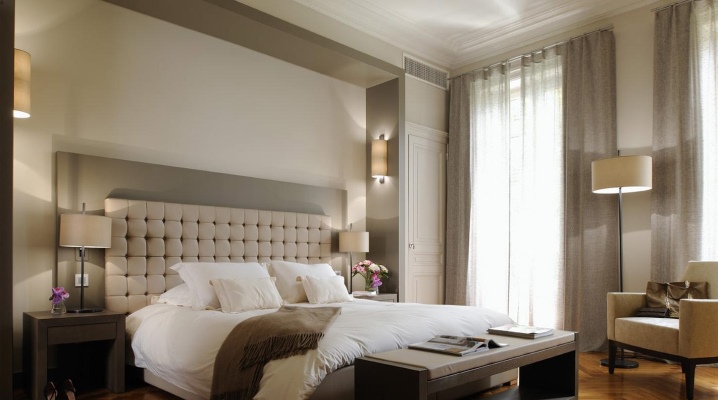
In the life of every person, sooner or later, there comes a period that scares and makes a lot of nervousness - repair. When carrying out repairs in the entire apartment, special attention should be paid to the room intended for relaxation, in which comfort is a prerequisite. It's about the bedroom. It is very important to equip it in such a way that it is pleasant to be in the room, and the atmosphere is conducive to relaxation and a wonderful pastime. After reading this article, you will learn how to make a beautiful renovation in the bedroom, spending a minimum of effort, nerves and financial resources.
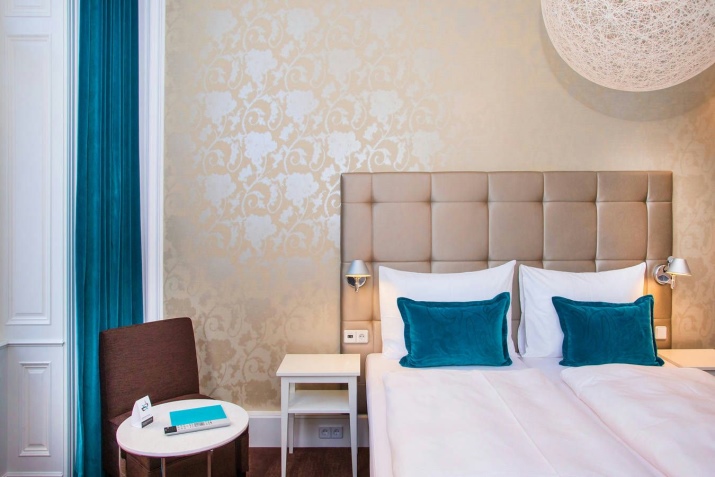


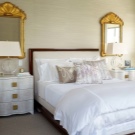
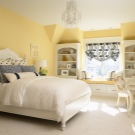
Development of a design project
Before starting the repair of any room, it is necessary to draw up a competent design project that covers absolutely all aspects of the upcoming actions. Not everyone knows what a design project is, what stages it includes, whether they are a necessity.
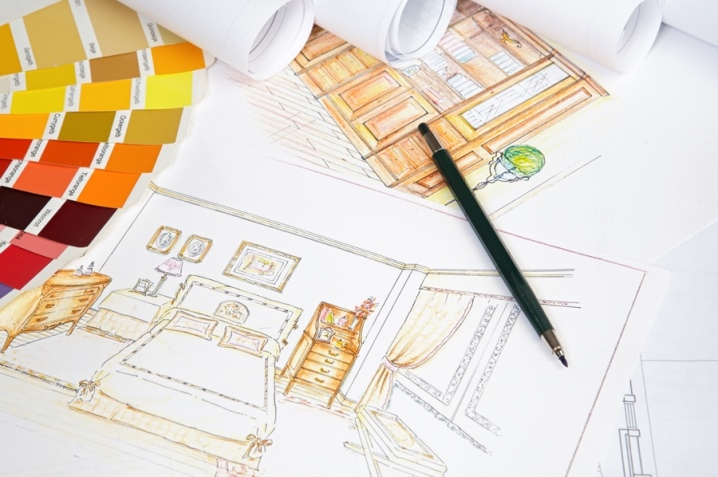
A design project is a set of necessary documentation, design developments and a list of building materials.
To plan everything correctly, you must adhere to the following order:
- Stage 1 - Discussion and budgeting. At this stage, all the available financial resources that can be invested in the renovation of the bedroom are calculated. This stage helps to avoid unreasonable spending.
- Stage 2 - working with the designer. This stage involves the development of the interior, drawing up plans and drawings, thinking through the smallest details regarding the situation. If finances do not allow, it is not at all necessary to resort to the help of a specialist, you can draw up a plan yourself.
- Stage 3 - discussion of building materials. After discussing the concept of interior decoration, it is necessary to decide what building and finishing materials will be used for the renovation.
- Stage 4 - calculation of upcoming expenses. The next step is to calculate the required amount of materials, as well as the upcoming costs, based on real numbers. Once calculated, the budget can either increase or decrease.
The design project should consist of these main stages.
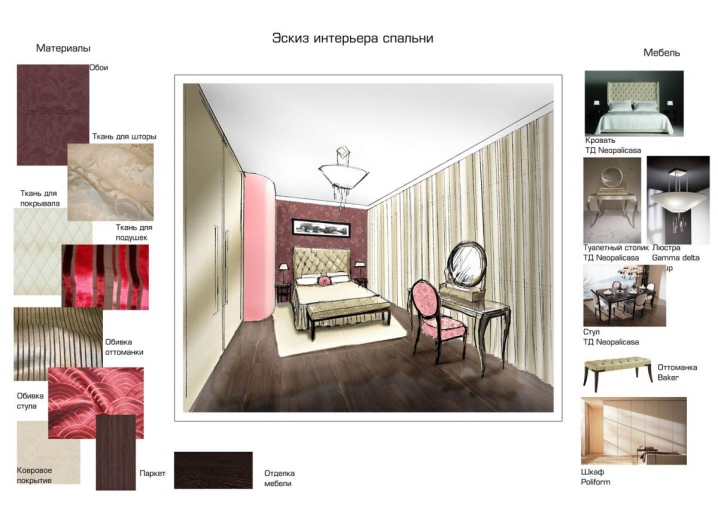
Any minor additions, equipping the room with accessories and decorative elements that are not part of the decoration, are not prescribed in the design project.
DIY repair steps
There is an opinion that repairs are easy to start, but impossible to finish - they can only be suspended for a while. However, this opinion is misleading, since with the competent development of the project (as well as the coverage of absolutely all details), the repair can be considered completely completed.
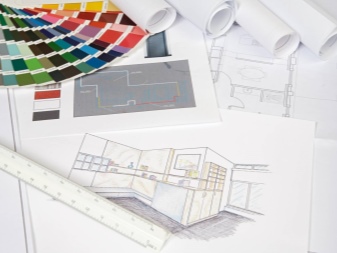
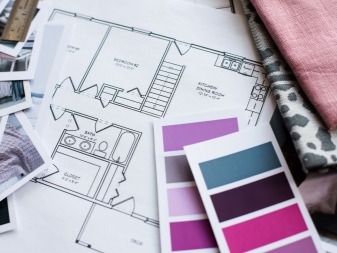
Many do not risk starting this process, because they underestimate their own strengths and use the help of third parties, whose wages may be somewhat overestimated.
One has only to study in more detail all the stages and difficulties of this process, it becomes clear that it is not so difficult to make repairs with your own hands.
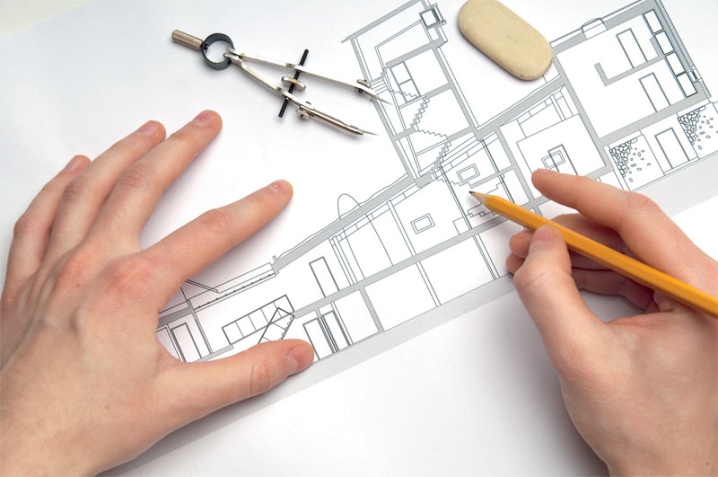
You can slightly update the room by making minor cosmetic repairs, affecting only the external decoration of the walls, ceiling and floor. Light cosmetic repairs will be relevant in a room where there are no serious damage and parts that require immediate replacement.

With cosmetic repairs, there is even no need to replace furniture, so the room remains almost in the same form as before the replacement of the finish, it just takes on a slightly updated and more fresh look. For cardinal changes, a major overhaul is required - with a complete replacement of furniture.
To make a major renovation, you need to cover many details. It is worth understanding what is included in the process of this type of repair, what important details must be taken into account.
Replacing windows
Houses with old wooden frames that have fallen into disrepair, as well as plastic windows that are out of order, may need to be replaced. Very often during the repair process, this stage is skipped, because it seems excessively costly, but its absence can entail quite serious consequences. Old windows can let in drafts, moisture and freeze unnecessarily in winter.

Replacing windows with your own hands is not as costly as that done by any person from the construction companies.
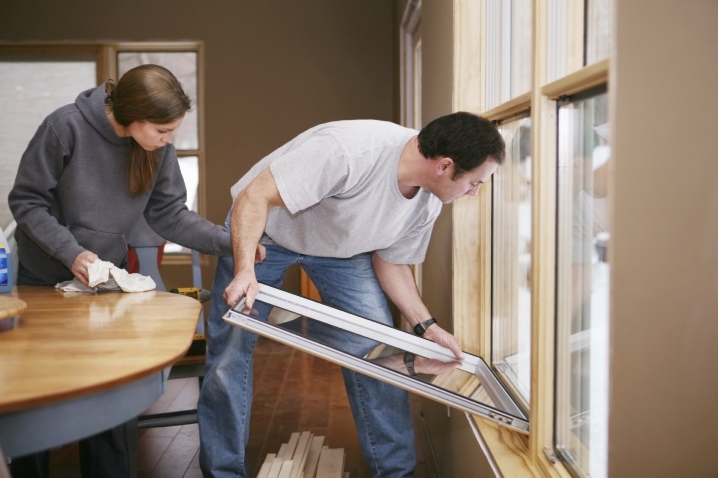
It is enough just to follow a certain sequence:
- It is necessary to take measurements from the window openings and order the corresponding double-glazed windows from the company or purchase them in specialized stores.
- Next, the old window frames are dismantled. You should carefully separate them from the window openings, taking care not to damage the walls.
- Then you need to carefully prepare the window openings for the installation of new double-glazed windows. It is necessary to remove the old materials used to install the windows, as well as to repair any damage that occurred during dismantling.
- After that, it is necessary to install a new window, securing it with special metal pins, without which it simply will not hold.
- After fixing the window in the opening, it is necessary to close all openings and slots with polyurethane foam.
- The final stage will be the filling of areas covered with foam, small cracks, as well as painting the slopes.



The replacement of windows is carried out in the first place, since it can lead to damage to the wall covering, which is undesirable after they have been decorated. They may lose their original appearance, and the work will have to be done anew.

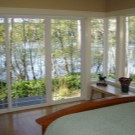
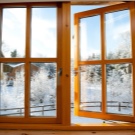

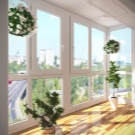
Dismantling
The next step will be the dismantling of all other components of the previous repair, since new finishing materials cannot be applied to old ones. You need to get acquainted in more detail with the process of dismantling old finishing materials and interior elements, as well as with some life hacks that facilitate this process.
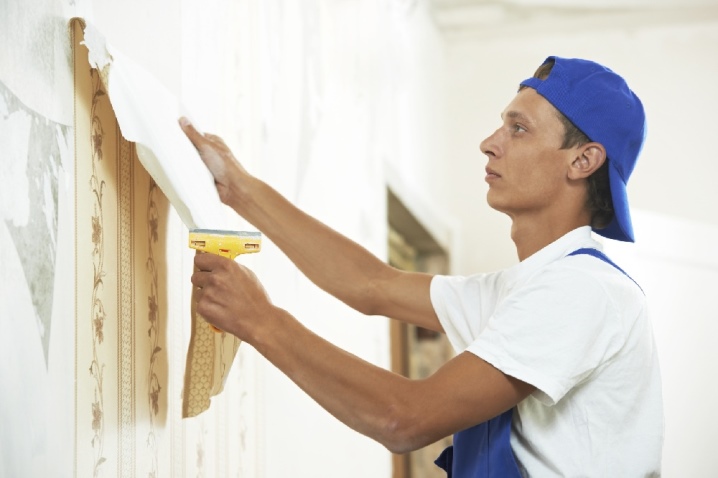
With a major overhaul, you will also have to get rid of the doors - you will need to replace them. Dismantling doorways is a very important part of the entire process. First you need to remove the door leaf itself from the hinges, carefully dismantle the platband and the door frame itself.
When replacing old doors, it is necessary to take into account the dimensions of the doorway, since in some cases it may need to be expanded or extended.


The process of removing old wallpaper can seem daunting and tedious if you rip dry canvases off an unprepared wall. There are many life hacks that will simplify the task.
The most effective ones are:
- Wallpaper can be dampened with warm water or soapy water. For convenience, you can use a spray bottle or mop. The canvases should be wet enough so that after a while they can be easily removed from the wall.
- If the wallpaper is wet, and the process is not facilitated by this, you can use a water steamer. The hot steam combined with the moisture that has already been applied is a wonderful way to get the canvas off the wall easily.
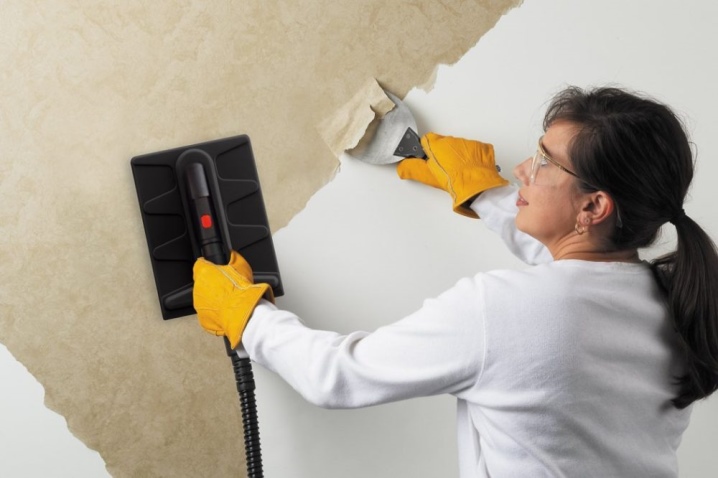
If there are tiles in the room, it will be necessary to dismantle it as well. This process is perhaps the most time consuming of all, as the tiles are attached to a special cement mortar that is incredibly strong and reliable.
First you have to get rid of the grout - with the help of wetting, a sharp hard object or a small grinder. Cement-based grout can be quite tough, so it will take some effort.
Since the process of removing old tiles can be somewhat time-consuming, you will have to be patient. You can dismantle it with a strong iron spatula and hammer, but this method can take quite a long time. Work with a puncher will be much faster and more efficient.
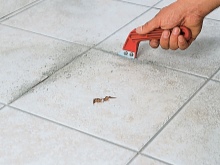
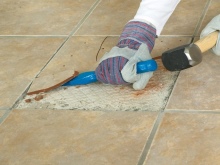
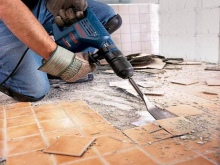
It is necessary to clean both the floor and the ceiling from old finishing materials. The cleaning method will vary depending on the coating used. For example, laminate, linoleum and parquet flooring is easy enough to remove, just like a stretch ceiling canvas. But you will have to tinker with whitewashing and paint, armed with a spatula and sandpaper.
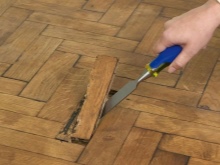
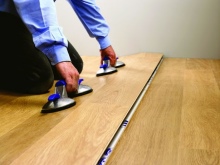
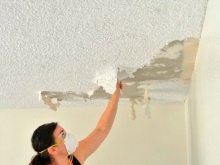
Layout of the necessary communications
If you want to make the bedroom more comfortable, it may be necessary to separate communications. You can highlight the existing options for how best to do this, as well as communication options that can be carried out to the bedroom.
First of all, it is electricity. Sometimes the central lighting located in the central part of the ceiling may not be enough, so you should think about additional points.
To save space, bedside floor lamps can be eliminated by using additional ceiling elements or wall sconces.

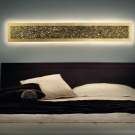
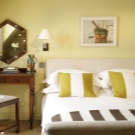
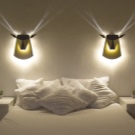
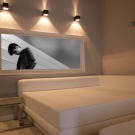
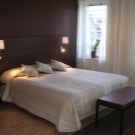
It is possible to dissolve electricity from the central lighting point, if it is quite powerful, from the electrical panel, if the repair is carried out throughout the apartment, as well as from the nearest outlet. In the bedroom, hidden wiring should be done, for which you will need to chisel the walls.
In the same way, you can draw lines to create additional electrical access points - outlets.
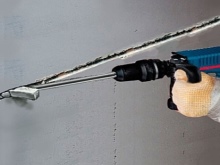
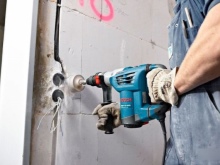

If the bedroom is next to a bathroom, toilet or kitchen, you can easily lead pipes into the room by equipping it with an additional water supply point.
To do this, you need the following:
- first of all - the sanitary permission obtained at the BTI;
- a well-designed plumbing pipe layout;
- pipes for hot and cold water, other plumbing items.
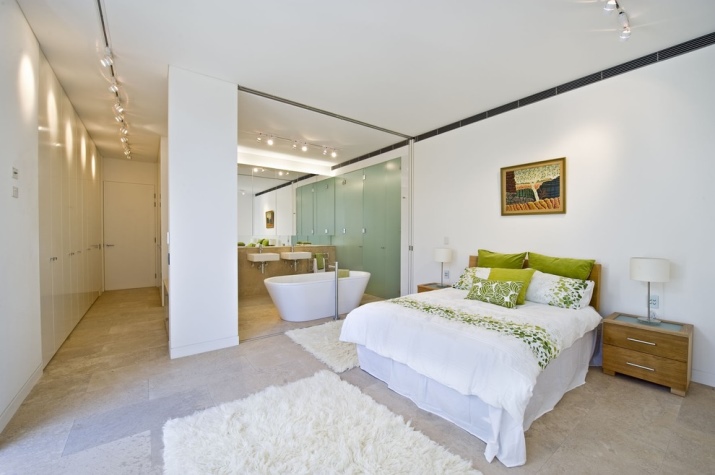
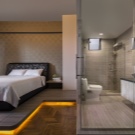
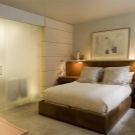
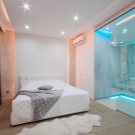
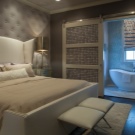
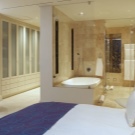
Do not make pipes in the floor, because if leaks occur, it will be extremely difficult to fix them without damaging the floor covering. It is best to use walls for this, securing pipes and covering this area with special cabinets.
The distribution of central heating is carried out in the same way.
Rough finish
When planning to start the process of finishing the premises, it is better to take care of the rough one. Not everyone knows what a rough finish is, what it is for. After all, not even every experienced specialist does it.
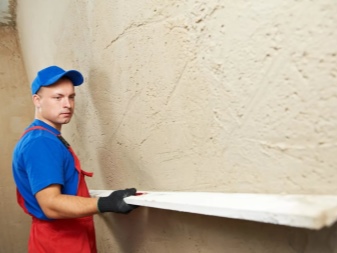

A rough finish is necessary, since without it it is impossible to make a high-quality finish. Thanks to the preparation, you can significantly extend the service life of the finishing materials, since they will be more securely attached to the walls of the apartment.
In addition, it is believed that a rough finish can even slightly enhance the soundproofing and thermoregulatory properties of the room... This is understandable, because with a rough finish, all small cracks and holes missed during construction will be repaired.
It is worth noting that both the breeding of communications and the construction of plasterboard structures are referred to the rough finish.
It is necessary to analyze in more detail the main stages of the rough finishing, the features of each of them, as well as familiarize yourself with the list of necessary materials.
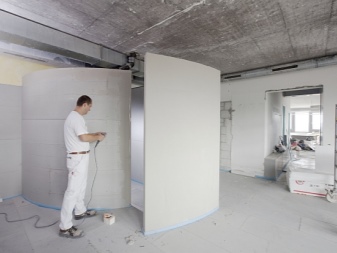



Ceiling
The most difficult thing is to carry out a ceiling rough finish, since during construction the slabs may not be laid quite evenly, it may be necessary to level the surface. This need disappears if a tension or suspended structure will be used as a ceiling decoration.


If repairs are to be done in a new apartment, the premises of which have not been subjected to the rough finishing process, it may occur the need to eliminate crevices between the ceiling slabs. These gaps can be quite large, so they just need to be eliminated.
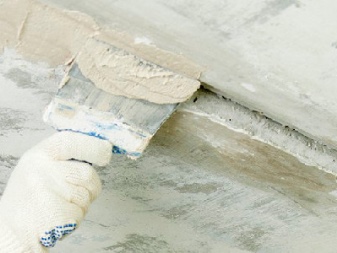
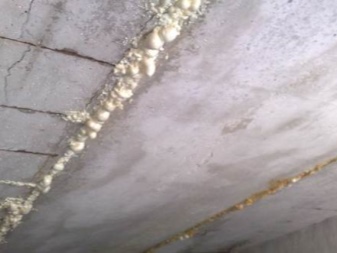
It is best to eliminate cracks using polyurethane foam. A level ruler, as well as a masking net and cement mortar, will help to make the surface of the ceiling smoother. All irregularities and differences must be smoothed out, creating a completely smooth ceiling surface.
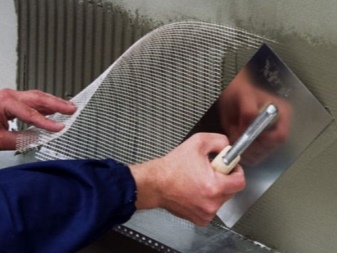
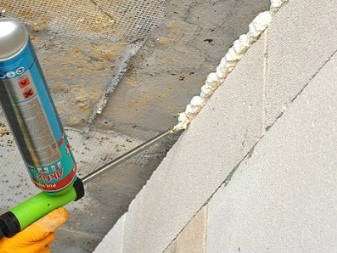
The top layer covering the ceiling should be plaster, which will become the basis for further actions.
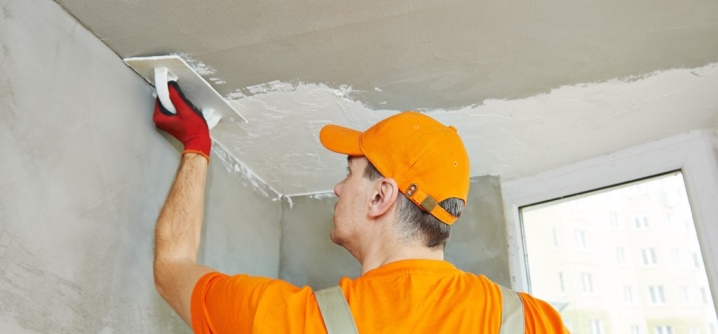
Walls
Rough finishing of the walls is done with a primer, plaster and putty.
Primer serves for better adhesion of materials to the wall surface.
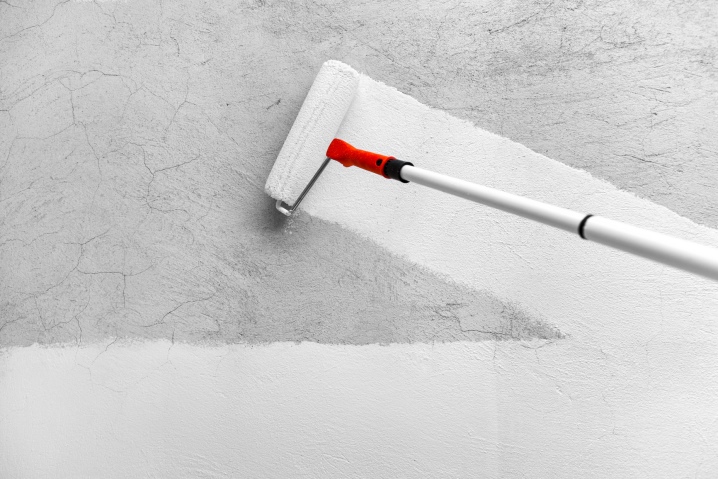
By using plasters correction of the surface of the walls is carried out, as well as the closure of any seams and smoothing of irregularities.
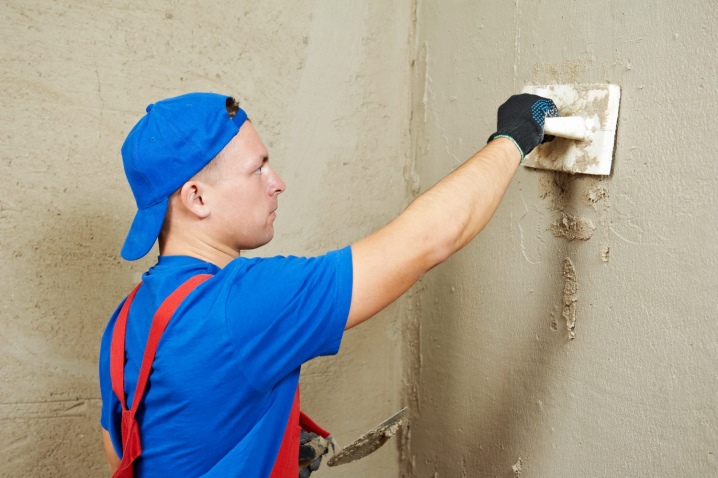
Putty is the final detail of the rough wall finish. It is necessary for the implementation of further wall decoration.
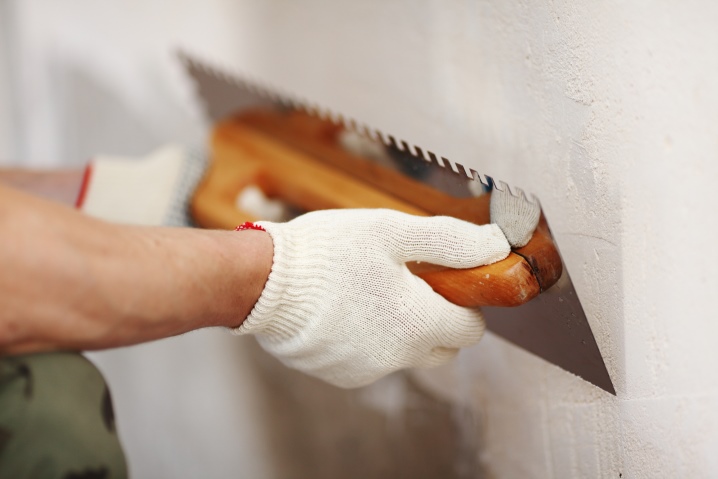
However, this is not all. As already mentioned, part of the rough wall decoration can be construction of additional partitions and interior structures... When it comes to decorative partitions, it is enough to use thin materials, but for serious interior floors, more durable options are needed.
As for decorative partitions, in most cases, gypsum plasterboard sheets are used for their construction, fixed on special metal profiles and forming a hollow space. Such a partition does not provide sound insulation and does not retain heat in a separate part of the room.
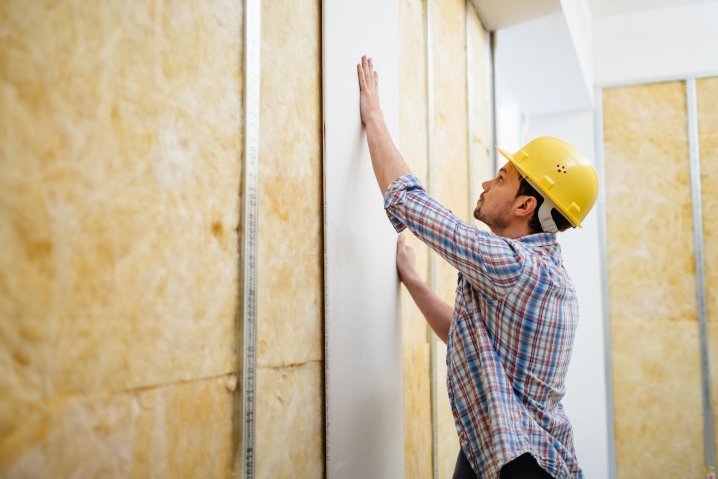
For the construction of full-fledged interior floors, you will need concrete blocks or ordinary bricks... In addition, foam blocks and cinder blocks are quite popular, durable and practical. The blocks are fastened together using a cement mixture, and the finished structure is covered with a thick layer of plaster and putty.
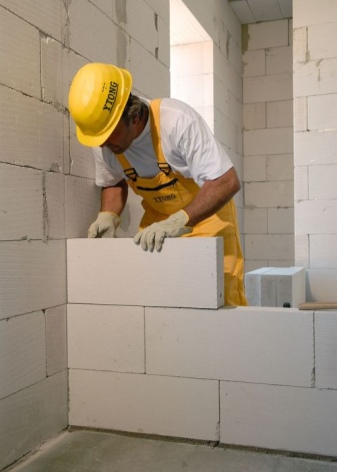
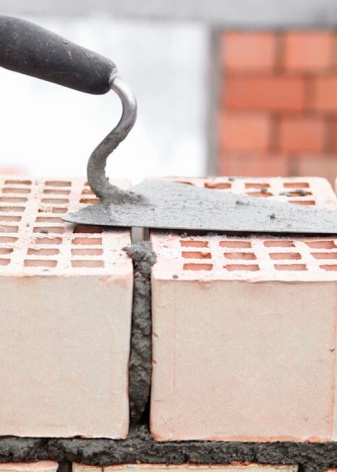
Floor screed
Another stage of the rough finish is working with the floor, namely, the implementation of the screed. A floor screed is an intermediate layer of the floor covering that separates the foundation laid during construction and the decorative elements.
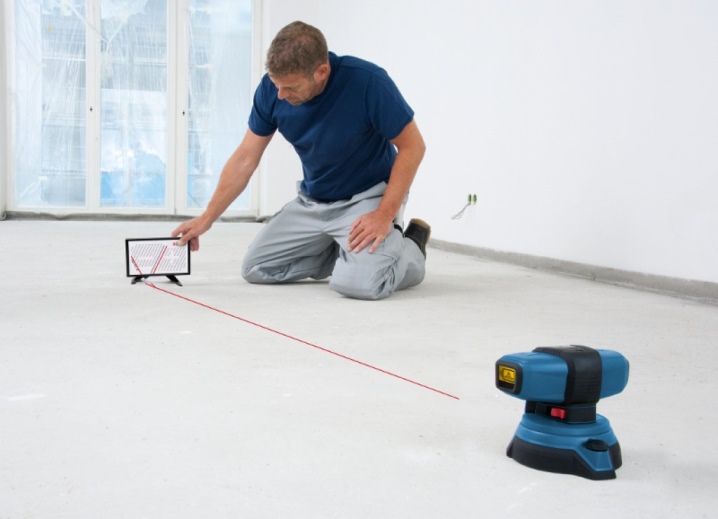
A floor screed is a necessity for several reasons:
- the base, as a rule, is not very even, it has many flaws, so the screed is made to level it;
- if the piping and heating routing is carried out under the floor, the screed will also be necessary, since this wiring will need to be hidden;
- a screed is also necessary for a competent, safe distribution of thermal insulation properties;
- the screed is also made if there is a need to create any slopes.
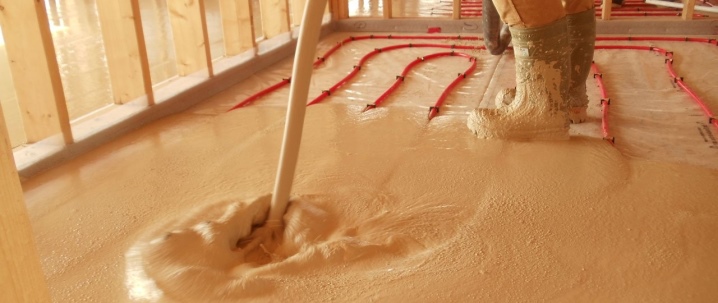
Laying the final flooring without screed will make the coating ineffective and reduce its thermal and noise insulation properties several times.

The screed also has a slight soundproofing effect. This is especially true for repairs in a bedroom located in a new building, since the sound insulation properties of such houses, as a rule, are reduced to almost a minimum.
Rough wall finishing and floor screed reduce the noise level.
There are several types of screeds, and each of them has some characteristic features.
Wet screeds are made by combining a dry mixture with an aqueous solution. Screeds of this type exist in two versions: tied and floating (serving to ensure the greatest degree of sound insulation, which is ensured by laying the mixture on special mats).
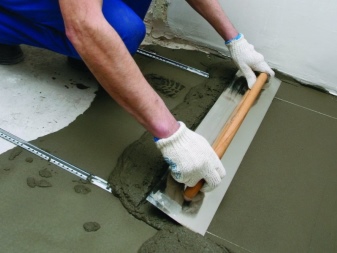
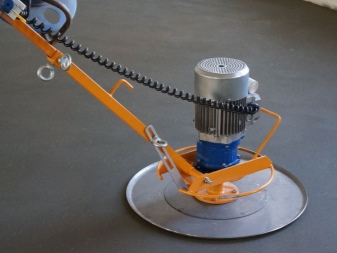
Dry screeds placed on the surface using expanded clay and special plates.The surface is treated with plaster or cement mortar to hide the resulting joints.
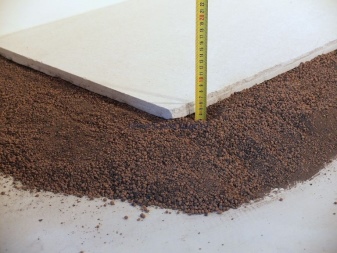
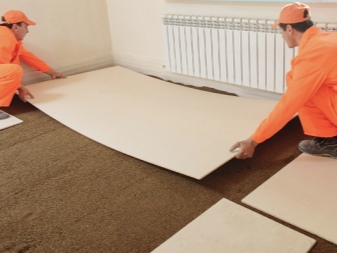
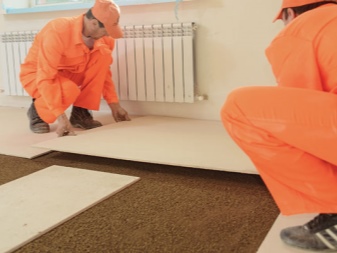
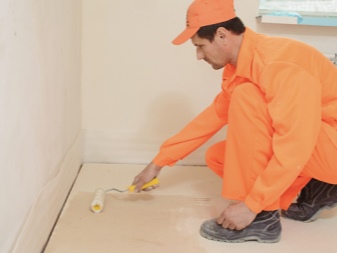
Ceiling and wall priming
After leveling the surface and applying the filler, it is necessary to prepare the walls and ceiling for the final finishing. To do this, you need to apply a layer of quality primer. The primer is a special solution that serves as a kind of adhesion between the surface of the wall or ceiling and the finishing material.
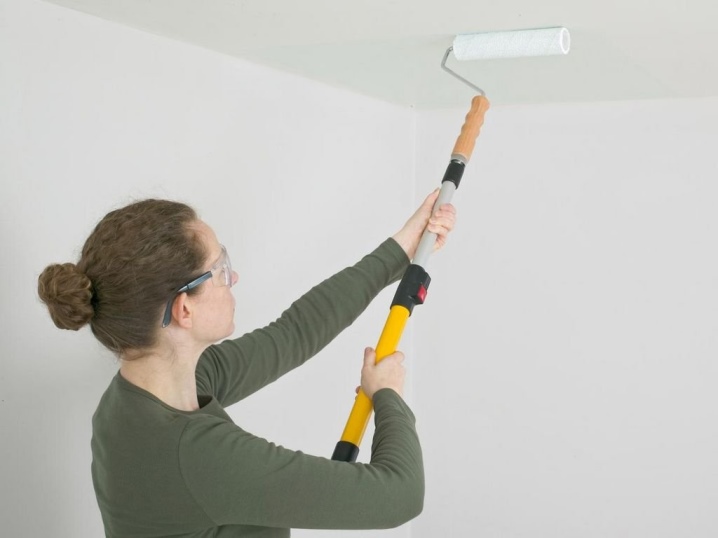
The primer also has protective properties, preventing the loss of moisture from finishing materials. The thing is that concrete has the peculiarity of excessively strong absorption and suction of moisture, which can lead to a rather rapid drying out of the material, loss of all elasticity and premature failure.
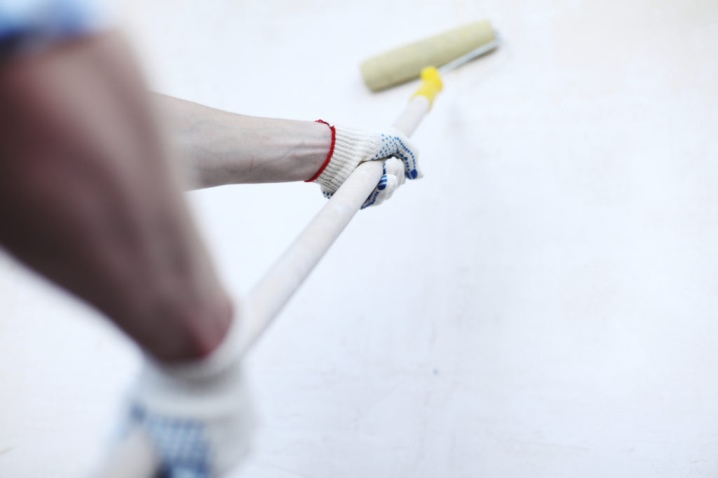
Primers are divided into several types and are selected according to the surface to be primed. In addition, the choice is influenced by the humidity of the room and the purpose of the material.
One type of primer is created in order to serve as an interlayer between building and finishing materials, while others are needed only for processing the base of the wall or ceiling. And the third ones are completely distinguished by the properties of deep penetration, which is very important for walls made of fragile, loose material.
The primer may need to be applied in several layers, depending on the type of mortar itself and the surface of the wall to which it is applied.
You can proceed to the final finishing only after all layers of the primer are completely dry.
To determine if the wall needs additional priming, after the first layer has dried, it is necessary to run over the surface with your hand. If dust from the material from which the wall is made remains on the palm of your hand, repeat the procedure.
Finishing
After the rough finish and preparation of the walls and ceiling, you should proceed with the finishing. It includes decorating walls, ceilings and floors with the necessary finishing materials.
The materials must necessarily be selected in advance, since the preparation of the walls must be carried out in accordance with the type of finish.
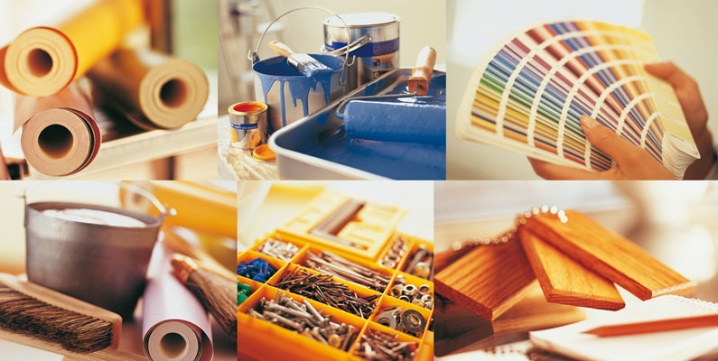
You should not be too smart when choosing materials. Overestimating your strengths, you may simply not cope with the task at hand and not complete the renovation of the bedroom as you would like (or not complete it at all). However, the choice of material will be discussed a little later, now the main stages of the final finishing and their features will be considered.
Fine finishing includes work on the surfaces of walls, ceilings and floors.
The sequence of processing the parts of the room that need to be decorated may change, depending on the selected finishing material.
Ceiling
Ceiling decoration is done first of all if plaster, paint, ceiling tiles, fixed with special glue, are chosen as finishing materials. This stage should be the first, since these materials are quite easily soiled and can damage the decor of the ceiling and floor.
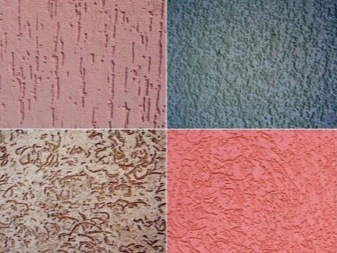
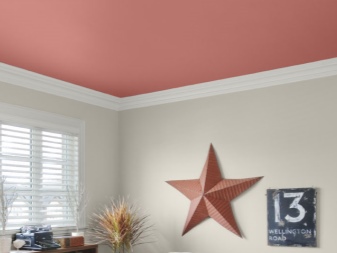
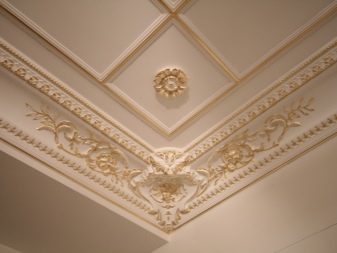

Whitewash and paint it is necessary to apply to the primed surface, but to fix the tiled decor, you will have to first plaster and putty the ceiling, since the glue does not always adhere well to the concrete surface.
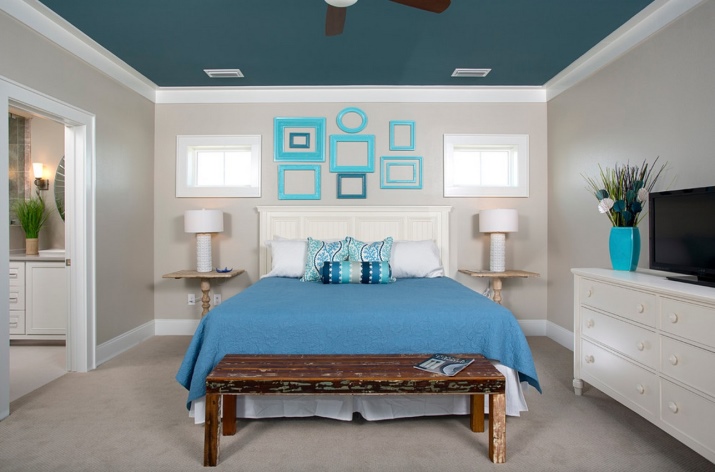
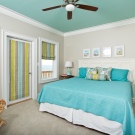
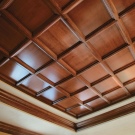
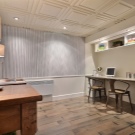
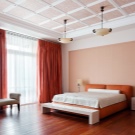
First of all, it is produced and construction of suspended ceiling structures and niches... Since such elements are made from sheets of drywall, the surface will also need to be plastered and putty, after which it is necessary to apply a primer and paint. The staining process can in any case lead to pollution of the surrounding space.

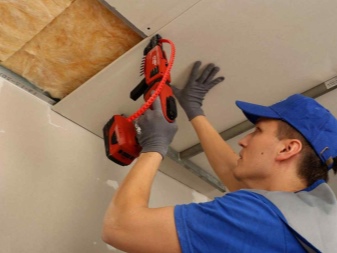
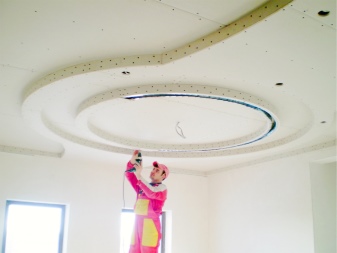
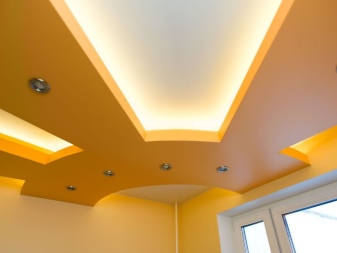
A stretch ceiling installation carried out at the final stage of finishing. It will be very difficult to glue the wallpaper under the already stretched canvas, and the decoration of the walls with plaster will be completely impossible.The stretch ceiling does not in any way affect the cleanliness of the walls and floor, since no liquid adhesives and coloring materials are used for its installation.
For the installation of the stretch fabric on the wall (a few centimeters from the ceiling), fastenings of special metal profiles are constructed. After that, the canvas is heated with special air cannons and stretched around the perimeter of the entire bedroom. The edges of such a canvas are tucked into the profiles - and thereby fixed.
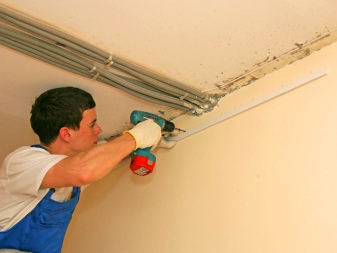
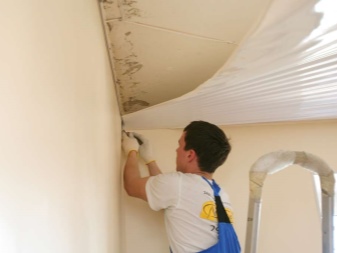

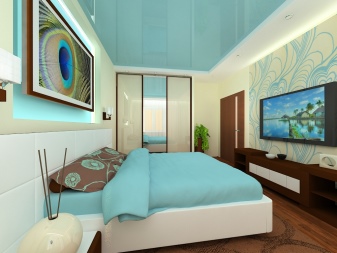
Walls
With the stages of finishing the ceiling, everything is clear, the next stage is the decor of the walls.
The most suitable option is selected - depending on the surface of the wall itself, room temperature, humidity level and individual preferences.
If the choice fell on ordinary wallpaper with a pattern, everything is quite simple here - high-quality glue with the appropriate characteristics is selected, the wallpaper is cut into canvases of the required length, coated with glue and attached to the wall. If necessary, you can apply glue to the wall itself too.
If the choice fell on a wallpaper with a pattern that needs to be docked and adjusted, the canvases should be cut in advance to the entire perimeter of the room - taking into account the creation of a holistic picture.
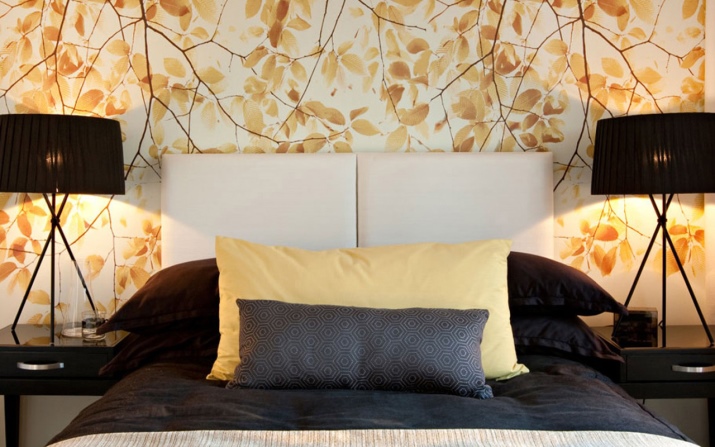
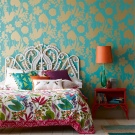
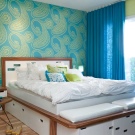
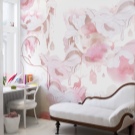
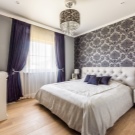
After sticking wallpaper for painting it is necessary to dry thoroughly - and only then paint.
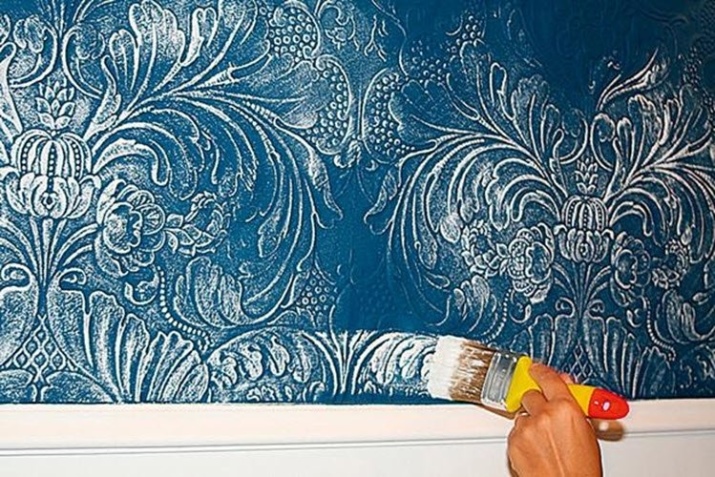

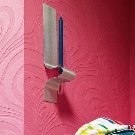
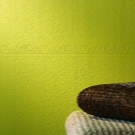
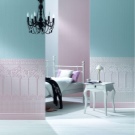
It is worth noting that you can paint both simply primed walls and a surface decorated with finishing plaster, with which you can create an interesting textured surface.
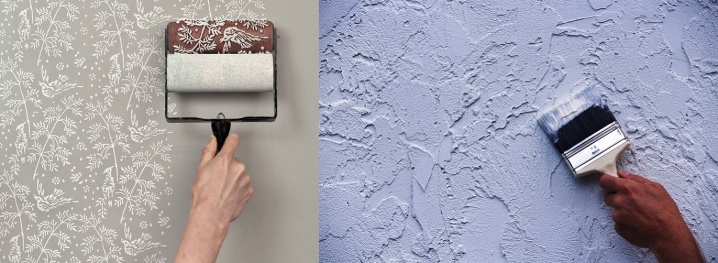
rules painting walls do not differ from the process of painting any other elements of the room with something special. First, you need to apply paint with a brush to the edges in the area of the floor and ceiling, as well as to the corner openings, after which (armed with a roller with the appropriate surface) you will need to paint over the central part of the wall.
If the ceiling has been previously painted, be careful when applying paint to the top of the wall. There is no need to touch the surface of the ceiling.


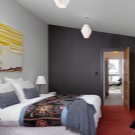
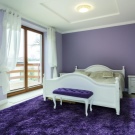
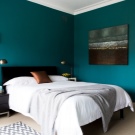
Floor
Finishing the floor is the very last stage that completes the renovation, since the painting of the floor surface is very rare, and in general - the process of decorating it in a special way does not affect the safety of the walls and ceiling.
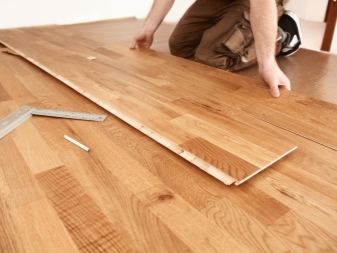
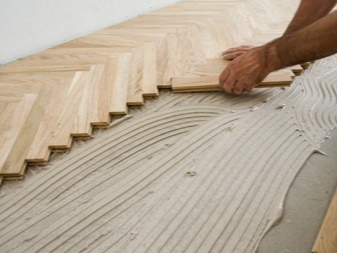
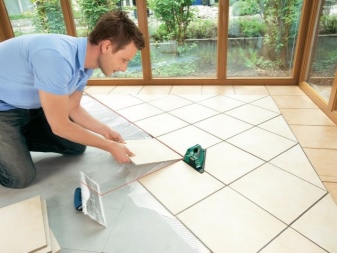
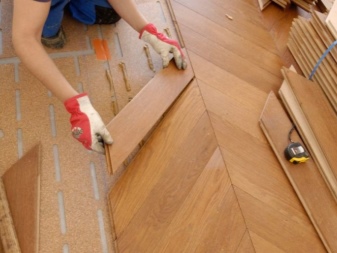
What is really worth considering before the process of finishing the entire room is equipping the floor with heating mats (a system of underfloor heating, which will be very relevant for a bedroom - especially if there is a balcony in the room).
Some types of underfloor heating require careful fixing. When laying mats on an already dried screed, they must be fixed with special glue or cement mortar. Some particularly powerful elements are even fixed before the surface is screed.
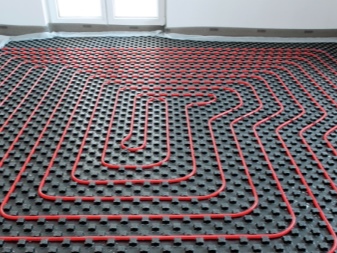
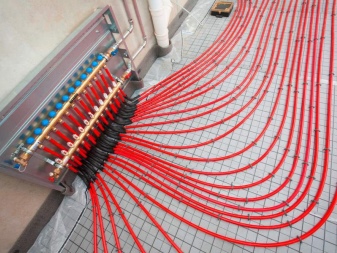
After the installation of the warm floor, the selected coating is finished. It can be ceramic tiles or porcelain stoneware (it is extremely rarely used for a bedroom), as well as high-quality linoleum, carpet, laminate or parquet flooring. Do not forget about a special substrate, which should be located almost under each of these coatings.
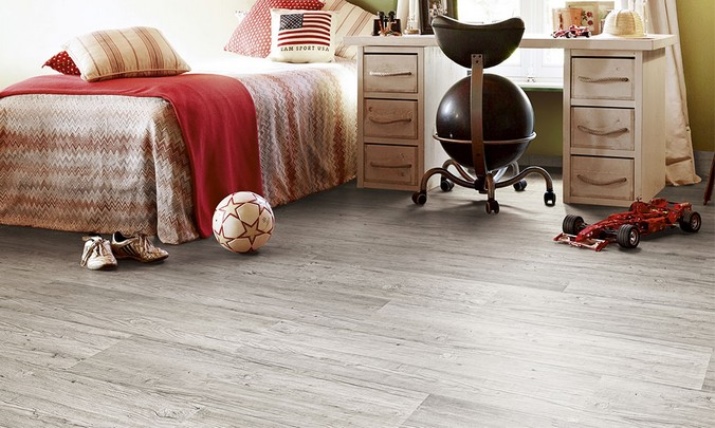
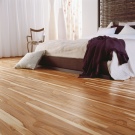
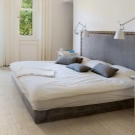
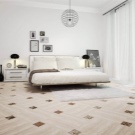
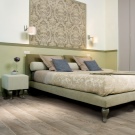
Special attention should be paid to parquet and parquet board, since the final stage is the application of a special coating - parquet varnish.
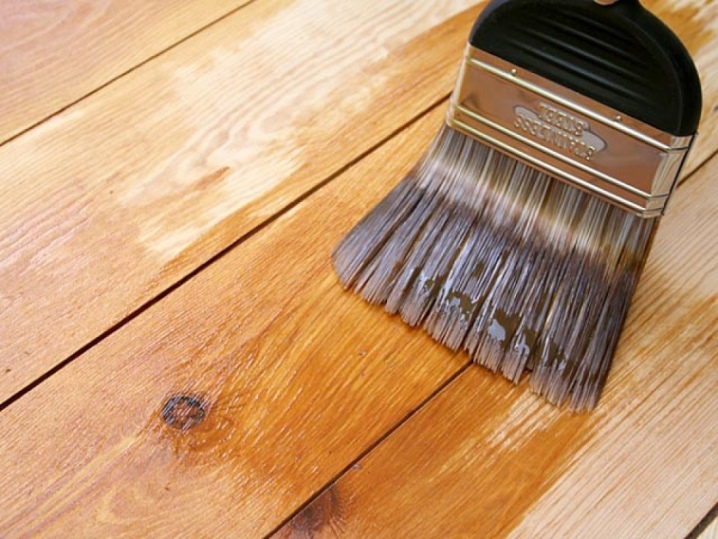
Tips for choosing building materials
Of course, an important aspect of any renovation process is the choice of quality building materials. You need to figure out what needs to be considered when choosing, what should be given special attention, and also find out the features of the most popular materials.
It is necessary to analyze the supply market - in order to identify the most profitable price variations of the same product. The renovation process (even one bedroom) requires a lot of investment, so a little savings will definitely not hurt.

It is worth considering what qualities and characteristics must be considered when choosing a particular material:
- Any material should not have strong unpleasant odors. A slight smell left after factory products quickly disappears, but the pungent smell characteristic of low-quality cheap materials can persist for quite a long time, having a detrimental effect on a person's well-being.
- The material must be antistaticthat prevent the build-up of static electricity, which can disrupt the conditions of comfortable living.
- It is very good if the material contains antibacterial componentsthat prevent the formation of fungi and the growth of harmful bacteria, which may also not have the best effect on health.
- Of course, the material must be beautiful and provide a wonderful experience.because the dormitory is designed to do just that.
- Any building and finishing materials must be strong and durable, since the annual renovation of the premises with the help of repairs is overhead and unreasonable.
You can select the most suitable finishing materials for different parts of the room.
For ceiling
For convenience, it is worth considering the advantages and disadvantages of various ceiling coverings using the example of a comparative table.
| Peculiarities | Advantages | disadvantages | |
| Whitewashing the ceiling | Done with a spray, roller or brush. | Simplicity of execution, neat appearance. | Pre-leveling of the surface, high degree of soiling, fragility. |
| Ceiling painting | Done using water-based or water-based paint. | The choice of budget materials is possible, the simplicity of execution. | Peels off quickly, needs to be renewed every couple of years, preliminary filling is necessary. |
| Drywall | They are constructed from drywall sheets and metal profiles. | With a special technique, you can build a structure of any shape. | Such constructions "eat up" the free space of the room. |
| Suspended ceiling structures: | |||
| Cassette | Consists of thin plates made of aluminum or galvanized materials. | Easy to install, easy to clean, conceal surface imperfections. | Low degree of sound insulation and noise suppression. |
| Hemmed | Installation is carried out using plasterboard and decorative panels. | The ability to use different lighting, retains heat well and dampens noise. | Decorative finishing is required, it is impossible to mount the ceiling wiring of electricity. |
| Rack | They consist of narrow aluminum plates. | Various decorative finishes are possible, suitable for rooms without heating. | Not suitable for residential use. |
| Wallpaper for the ceiling | Dense ceiling wallpaper and appropriate glue are used. | Cleanliness in the process, it is easy to hide the defects of the ceiling, durability. | Cheap wallpapers quickly lose their original appearance and cannot be removed from dirt. |
| Stretch ceiling | They are built with the help of metal profiles and a special canvas stretched when heated. | Suitable for rooms with high humidity, retains its original appearance for a long time, it is possible to mount lamps, fireproof, does not require special care. | Intolerant to mechanical stress with sharp objects. |
| Ceiling tiles | Tiles are made of expanded polystyrene, size 50x50 cm. | Large selection of surfaces and shades, easy maintenance. | Time-consuming work, fragility of tiles, fragility of base pecks. |
For walls
The best option for decorating bedroom walls is non-woven and high quality vinyl wallpaper... It is best to choose meter-long ones, since they are more convenient to glue, and the whole process will take much less time.
Wallpaper of neutral light shades is suitable, since bright colors are not very appropriate in the bedroom.
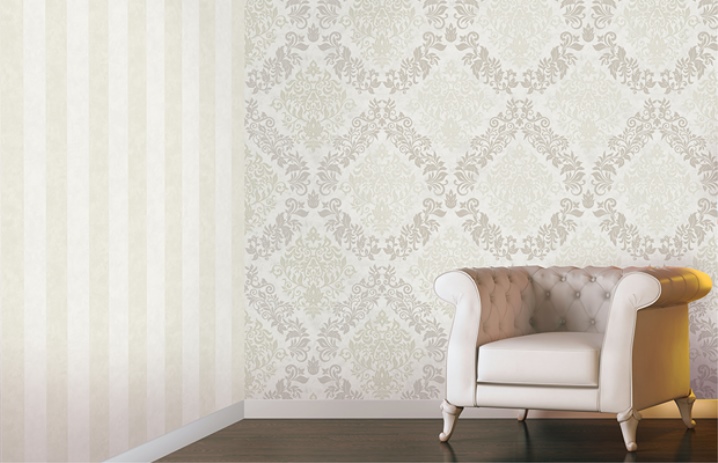
For those who want to add colors to the bedroom interior or create an atmosphere of something unusual, finishing is suitable decorative plasters or unusual photomuralsglued to one of the central walls.
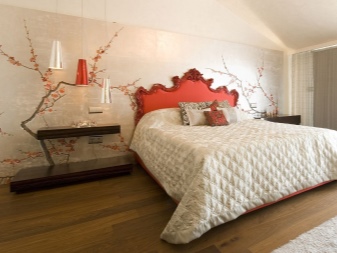

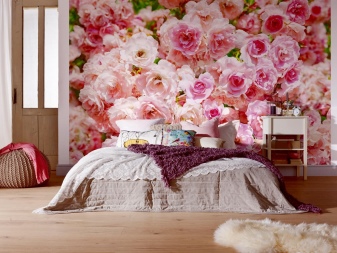

For floor
There are quite a few flooring options, you can choose any - in accordance with individual tastes and needs. The easiest to install, for example, is considered linoleumthat looks quite attractive. In addition, a newfangled development is environmentally friendly linoleum, with hypoallergenic components in the composition.

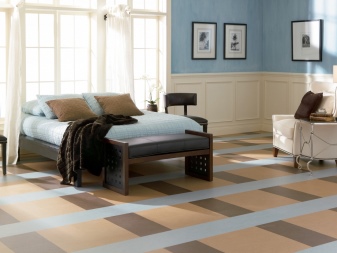
Similar in ease of installation is considered carpet - carpet covering, distributed over the entire surface of the floor in the room. Such material can be laid in the bedroom if you are interested in softness and warm floors. The disadvantages include the inconvenience of caring for such material. The carpet has a lot of advantages.

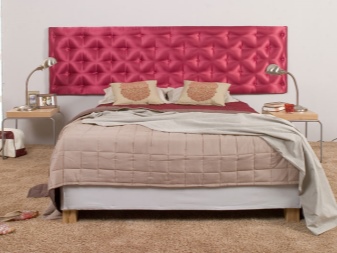
Laminate is the most common floor covering. It is affordable, practical and will last for quite some time. There are quite a few design solutions: white, brown, dark or colored laminate can be laid on the floor.
It is impossible not to mention and parquet board... This coating is better in quality than laminate, but it has one feature - it is necessary to cover the floor with a special parquet varnish.
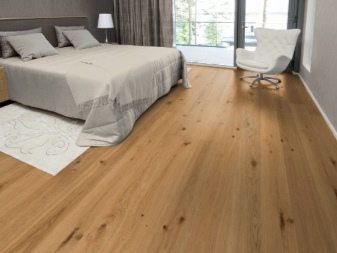
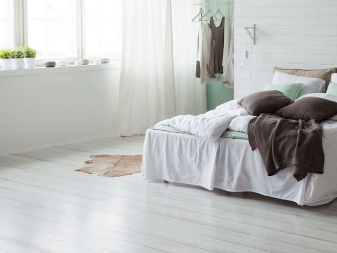
As a special design move, you can use the structure of the structure two-level floor, decorated with different finishing materials. The two-level floor will become the highlight of the bedroom interior.
As for tiles, self-leveling, cork floors, as well as a tiled surface, the main thing can be noted - everyone decides for himself which coating is best suited for his own bedroom.
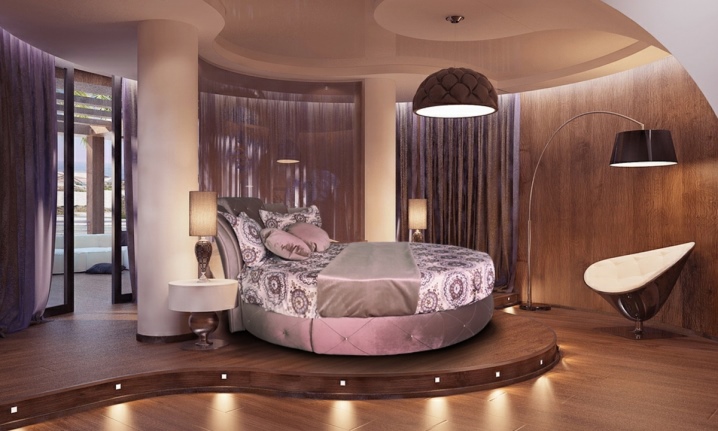













The comment was sent successfully.